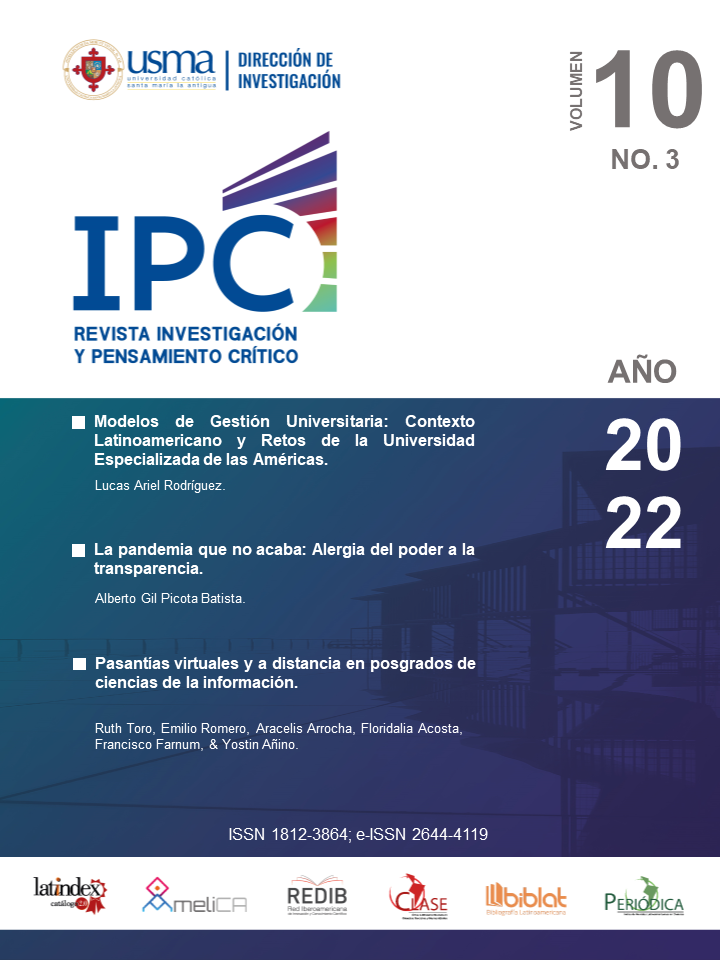The pandemic that does not end: Allergy of power to transparency
DOI:
https://doi.org/10.37387/ipc.v10i3.323Keywords:
viruses, crisis, social, climate, unemploymentAbstract
This article is a report of the book The pandemic that does not end: Allergy of power to transparency (The Covid-19 in Panama from the perspective of Psychology), which is the result of the production function carried out by the author in the year 2020 at the Faculty of Psychology of the University of Panama. The research, in essence, constitutes a critical approach to the psychosocial and human impact of the pandemic on Panamanian society. To achieve this, a SWOT analysis of the Panamanian State was drawn up regarding the crisis, and its macrostructural potentialities in the social, economic and industrial, educational and research fields were examined. These assessments gave rise to conclusions and recommendations, urgent in a society that, like the entire globe, was shaken to its foundations by Covid-19, a phenomenon that highlighted the shortcomings and entropy of the Isthmus social formation. The holistic and direct scrutiny carried out focused on the problem from April 11 to July 20, 2020, not only in terms of public health, but also with regard to the management of the State and its responsibility in terms of political direction and transparency. In the end, the critical situation of the Social Security Fund emerged as a matter of crucial importance for national life, a sensitive piece of economic security, health and national destiny. The study allowed to conclude that, only, a united and assertive nation will be able to save this institution, which is key to the future and stability of Panama today and in the future.
Downloads
Published
How to Cite
Issue
Section
License
Copyright (c) 2022 Investigación y Pensamiento Crítico

This work is licensed under a Creative Commons Attribution-NonCommercial-ShareAlike 4.0 International License.
1. The authors preserves the patrimonial rights (copyright) of the published works, and favors and allows their reuse.
2. The journal (and its contents) use Creative Commons licenses, specifically the CC BY NC SA type, where: "the beneficiary of the license has the right to copy, distribute, display and represent the work and make derivative works provided you acknowledge and cite the work in the manner specified by the author or licensor."
3. They can be copied, used, disseminated, transmitted and exhibited publicly, provided that: i) the authorship and the original source of its publication (magazine, publisher and URL, DOI of the work) are cited; ii) are not used for commercial purposes.
4. Conditions of self-archiving. Authors are encouraged to electronically disseminate the post-print versions (version evaluated and accepted for publication), as it favors their circulation and dissemination, increases their citation and reach among the academic community.











